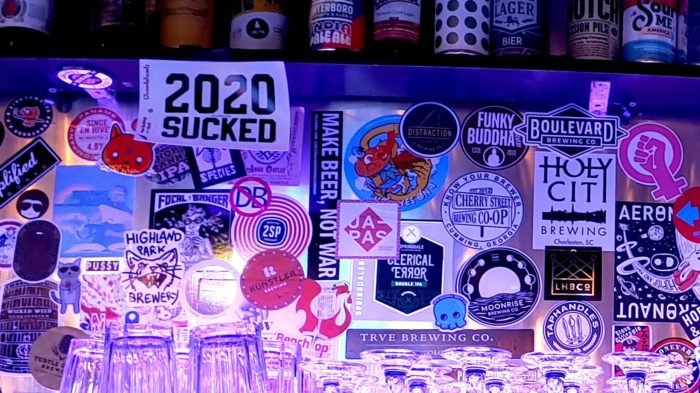As Boston-area restaurants struggle to emerge from the COVID-19 pandemic, they face another crisis that threatens their very existence
It took well over a year, but the streets of Boston are mostly full again, with crowds of people jamming many of the restaurants and bars of the Back Bay, North End, South End, Seaport District, and beyond. Something doesn’t seem quite right though, as some spots have empty tables on busy nights while others have closed back down temporarily, and still others remain completely shuttered, having never opened back up since the start of the pandemic back in March of 2020—and complaints about inconsistent food and service abound.
Is there a single cause to all of these issues? Is it the remnants of the coronavirus crisis that is bringing all this about? The answer to the second question is obviously yes, but while the first question is a bit more complicated, there actually is a common thread, and one that may surprise you: There simply aren’t enough workers in the restaurant industry right now.
If you look on social media these days, you’ll see that restaurant owners and managers seem to be getting increasingly desperate about finding people to work for them. One local restaurateur recently asked if anyone would be up for any of a distressingly-long list of job positions, ending the post with the word “please?” In addition, a popular dining spot posted that they would be temporarily closing because of insufficient staff, noting that they didn’t want to risk not being able to offer the type of service that so many customers were used to (fortunately, they have since reopened). In another instance, a tweet went up that showed a vehicle with job postings written on its back window and with two phone numbers listed below. There are many other stories like these in the local area, giving a sense as to the increasing hopelessness of the situation.
You would think that with all the restaurants having closed down either partially or fully for such a long time, a huge number of people who were laid off would be looking to get back to work within the industry, but this simply isn’t happening. The reasons are many, including a good number of folks leaving the restaurant industry for greener pastures, as so much of the work is low-paying, often entails long hours, and can be extremely stressful, especially for such positions as line cooks and servers. Restaurant workers have also had to deal with the same scourge that so many others in the service and retail industries face—rude and abusive behavior that seems to have gotten so much worse of late, so much so that some incidents in the local area and elsewhere have actually turned into pretty big news stories in part because of the outrageous nature of people’s actions. And, of course, there is the virus itself, which hasn’t gone away by any means, and with the more-contagious Delta variant on the rise in this country, it can be pretty scary having to deal with maskless people in the close quarters of a restaurant day in and day out.
The worker shortage is, to put it plainly, turning into a nightmare of almost unspeakable proportions, as it has the potential to lead to a snowball effect that dining and drinking spots might not be able to recover from, as they have already been greatly weakened by the pandemic and subsequent shutdowns. For any given restaurant, fewer workers can mean longer wait times for orders, dining rooms that are unable to run at 100% capacity, and overwhelmed kitchens not being able to put out high-quality dishes on a consistent basis, and if restaurant owners try to entice potential workers with higher wages, this can lead to higher menu prices—and possibly much higher prices when combined with the already-spiraling costs of many ingredients needed to make the dishes along with rents and utilities.
Sadly, these problems tend to circle right back to that ugly issue of bad behavior by customers, some of whom don’t seem to realize—or don’t care—that their gripes stem from the fact that many restaurants have gone from zero to sixty almost immediately with the ending of restrictions, and often with a completely new staff that has had little time to settle in. All of this has the potential to lead to even more workers walking away from the restaurant industry which could ultimately cause places to shut down permanently because if a dining spot is already operating on razor-thin margins, you don’t need to be a financial whiz to know how quickly things can fall apart—especially since the Restaurant Revitalization Fund is now depleted, and as of this writing, there are no guarantees that the program will be replenished which means that countless dining spots could be left out in the cold just when they need funds the most.
It’s true that some models and concepts in the restaurant industry may have the capability to survive better than others during a worker shortage. Take a food truck, for example; if you only need three or four people to run it, it’s a whole lot easier to find enough workers than, say, a high-end restaurant and bar that might need more than 100 employees. By the same token, a small family-run pizzeria, sub shop, Chinese takeout place, or bakery/pastry shop might not have as big of a problem either, especially in the case of ma-and-pa places where the staff might consist of four or five family members and maybe another worker or two.
If you look at how bars and breweries run, it seems that they might fare better for the most part as well, especially if food service isn’t really front and center. Take your basic neighborhood bar that serves pretzels, potato chips, hot dogs, and the like while also being a beer and a shot type of place, or think about a taproom where people are sampling brews and maybe ordering from a food truck that’s on the premises. If these places are short-staffed, the hits they take might not be as big as that of a bustling bistro that does 800 covers (individual meals for you non-industry folks) on a busy night. In some ways, the worst position to be in right now is that of a brand new good-sized restaurant that is planning to open its doors for the first time because while other similarly-sized places may need to fill 10 or 20 out of 50 positions these days, a new restaurant could be looking to fill all 50 positions, which, in this market, is so difficult to do that some spots that have everything else in place (including liquor licenses) literally can’t open because they don’t have the staff.
So, where is this all heading? No one knows for sure, but ironically, one way the gap between restaurant jobs offered and people looking for work may be fixed is if we see a slew of closures which absolutely nobody wants, but it certainly could happen. One well-known restaurant person in Boston recently hinted on social media that if more dining spots close due to the Restaurant Revitalization Fund not being restored, there will be fewer work opportunities out there, but this may indeed work out in a strange way for restaurant owners as fewer job offers means more of a chance of hiring those who remain. But again, this isn’t how any of this should work and it would be exceedingly damaging to the entire industry in the long run.
Finally, there’s the wild card that no one really wants to think about—what happens if the Delta variant of the virus continues to hit those who are unvaccinated, and also results in more and more breakthrough cases among those who have gotten their shots? As of now, it looks like any tighter health restrictions may be limited to a return to mask restrictions and social distancing, but if things get bad enough to warrant renewed restaurant restrictions or even shutdowns, a work shortage—while serious—will be the least of our concerns.
Marc is the founder of @hiddenboston, a textbook editor, a hike leader for @AppMtnClub, and a food and travel writer and commenter for DigBoston, NBC/NECN, WBZ, WMFO and indie617.


